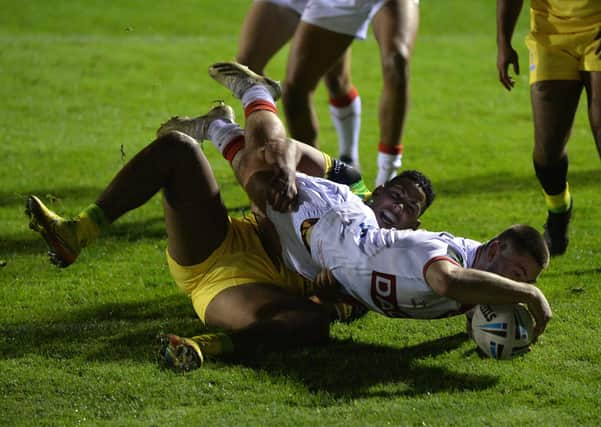New rules for 2022 will actually improve the game we love - Dave Craven


Often they seem pointless and irrelevant but arrive what may.
So many times, it feels like the sport alters things just for the sake of it, and, too often, it ends with negative results. Thankfully, though, it is good to see the latest adaptations announced this week are actually all worthwhile and needed in 2022: they should improve the game as a spectacle.
Advertisement
Hide AdAdvertisement
Hide AdFirstly, it will be great to see scrums back in action. Well, when I write ‘action’, I accept there is very little action in them at all and it is merely a way of restarting the game.
Still, they have largely been missed – and not just by larger forwards hunting a breather – since they were ditched 14 months ago in the name of ‘close contacts’.
Admittedly, I think at one point, long before Covid was even a thing, I may even have been one of those toying with the argument for completely disbanding scrums. There is an argument for that: not since the early 90s, perhaps even before, has the scrum been a genuine battle for possession as was its original intention.
However, since they were suspended as an “emergency law” last summer, I feel it has become apparent there is still a place for them in the sport. The chance to create extra space on the pitch by having a dozen players drawn together in such a way is important.
Advertisement
Hide AdAdvertisement
Hide AdYes, some teams will still not try to exploit it but, for the more adventurous, it will be a welcome fresh attacking option.
Few could argue with the second of the three rule changes deployed for 2022: reversing the ball steal law that brought such confusion this season. It had fallen in line with the NRL and international game in allowing the ball to be legally stripped from the attacking by a single defender even if other defenders had previously been involved in the tackle.
However, as the number of attempted steals predictably rose, that proved nightmarish to officiate and left the game looking scrappy and ragged.
For 2022, the initial ruling will be in place: a ball steal can only be enacted in a one-on-one tackle.
Advertisement
Hide AdAdvertisement
Hide AdLastly, the decision to tighten up on potential gamesmanship is also welcomed. It has become glaringly obvious at times this season that players have been treated on field for injuries at favourable times for the defending team, forcing the game to be stopped when they are perhaps under pressure.
Whether that be after conceding a drop-out, or late in sets near their own line, it has led to understandable frustrations as the game is disrupted and slowed.
But now, unless a player goes down injured and requires a HIA, anyone who needs to stop the game must depart the field for two minutes to receive treatment.
Clearly, that disadvantages his side so the hope is it’ll discourage players contemplating calling a physio on unnecessarily.
Advertisement
Hide AdAdvertisement
Hide AdThere have been some excellent rule changes over the years, not least in 2012 when it was deemed if a player in possession of the ball hits the corner flag he will no longer be deemed ‘in touch’, opening up the chance for wingers all over the country to hone all manner of new, spectacular try-scoring finishes.
Similarly, the 40/20 kick was an excellent addition but one area which urgently needs work is the obstruction rule, particularly when we see brilliant tries being ruled out after a lead runner marginally nudges a defender 20m away from the score with no chance of ever preventing it.
Maybe that can be added to the 2023 wishlist.
Comment Guidelines
National World encourages reader discussion on our stories. User feedback, insights and back-and-forth exchanges add a rich layer of context to reporting. Please review our Community Guidelines before commenting.